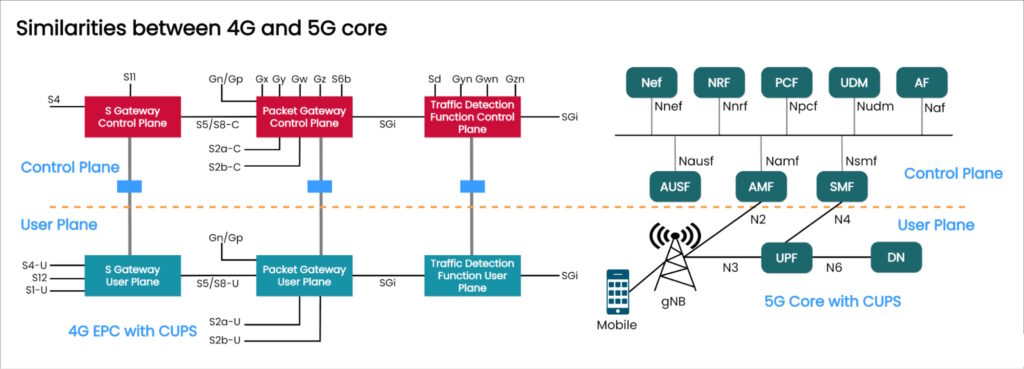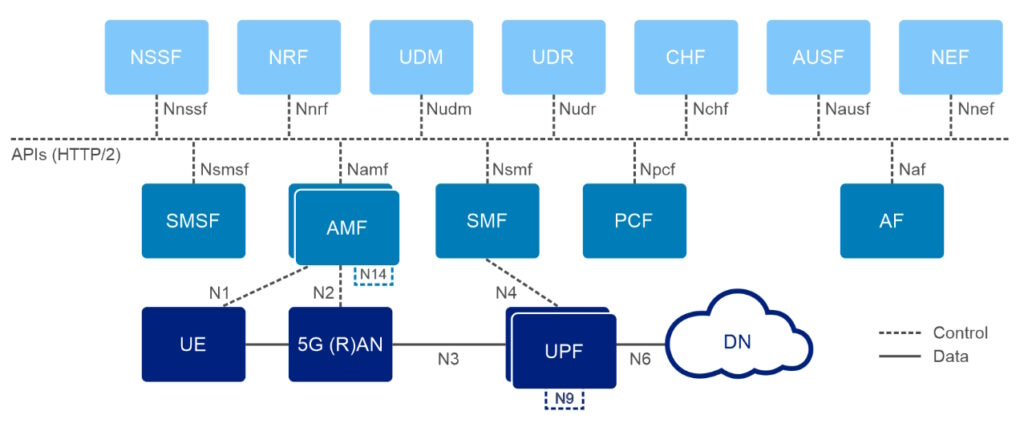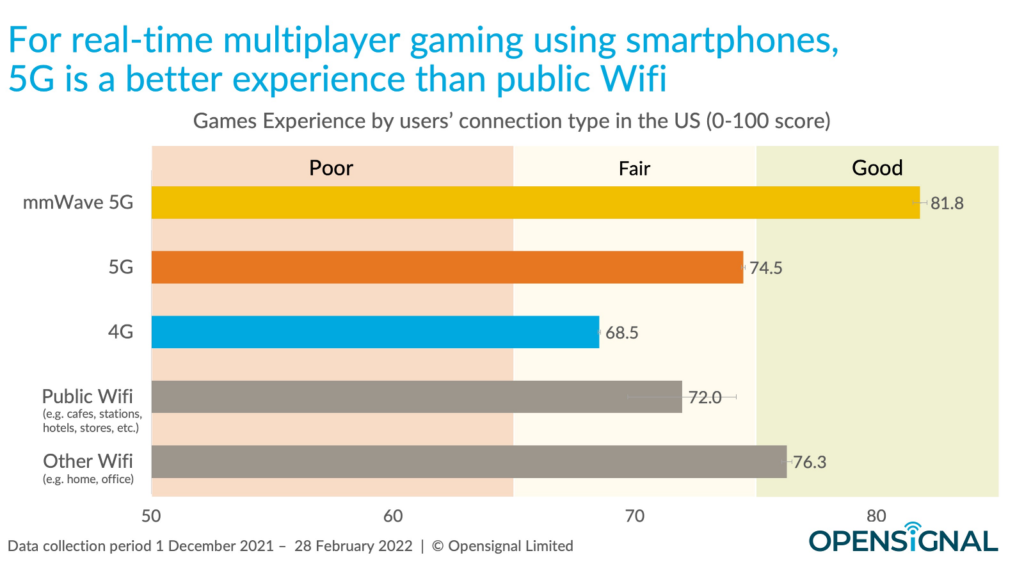A 5G core (5GC) acts as the central control and management hub for a 5G network, similar to the Evolved Packet Core (EPC) that supports both voice and data services in a 4G LTE network.
Unlike the flat architecture of the 4G EPC, the 5GC is cloud native and follows a service-based architecture (SBA). It leverages cloud technology to host independent network functions (NFs) as containerized microservices.
These microservices enable virtualization, scalability, and independent upgrades, enhancing operational flexibility. 5G NFs use HTTP/2 as the base communication protocol to subscribe and register for services from other NFs. Additionally, the 5GC reduces the dependencies between the access network (AN) and the core network (CN).
In 4G LTE, the user plane (UP) and control plane (CP) were separated in the protocol stack, unlike the tightly integrated EPC architecture. The Control and User Plane Separation (CUPS) introduced in LTE allowed for the support of various use cases.
Further developed in 5G, CUPS now offers higher data rates, lower latencies, and a broader range of use cases such as Ultra Reliable Low Latency Communication (URLLC) (Figure 1).
The 5GC encompasses various network functions, including key functions illustrated in Figure 2:
- Access and Mobility Management Function (AMF) for user registration, authentication, and mobility management.
- Session Management Function (SMF) for user sessions, data flow control, and quality of service (QoS) requirements.
- User Plane Function (UPF) for forwarding user data packets between the network and user devices.
- Network Slice Selection Function (NSSF) for determining the appropriate network slice based on application requirements.
Additional functions of the 5GC core include:
- Network Exposure Function (NEF) for secure communication between the 5GC and external applications.
- Network Repository Function (NRF) managing all NF instances in the service-based architecture.
- Policy Control Function (PCF) creating policies for control panel NFs to address QoS, network slicing, and resource allocation.
- Unified Data Management (UDM) maintaining subscriber data and policies.
- Unified Data Repository (UDR) storing data from the UDM to enhance network functionalities.
Operational Workflow
The process initiates with a device connecting to the AMF for identity verification and network slice assignment. Subsequently, the SMF establishes the session, defines QoS and network slice via NSSF, and routes data through UPF. The 5GC dynamically optimizes resource allocation for device and network performance.
Synopsis
The 5GC’s service-based architecture and cloud native design enable rapid deployment, scaling, and integration of new services. It offers robust security measures, ensuring network integrity and user data protection. The 5GC supports high data rates, low latencies, optimized QoS, and extensive device connectivity for advanced 5G applications.
References
5G Core explained, Nokia
5G Core Network Architecture, Niral Networks
Evolve your core network for 5G, Ericsson
Exploring 4G and 5G Core Network Protocol Evolution, Apeksha Telecom
Hybrid core network – 4G to 5G Core Interconnection, Telcoma
Migrate to a 5G Core (5GC) Network, Intel
The 5G Core Network Demystified, Dell
What is the 5G Core and Why Does it Matter?, Celona
EEWorld online related links
Why the 5G core converges wireless with wireline
Why voice over 5G relies heavily on LTE
IoT: How 5G differs from LTE
Orchestration at the edge reduces network latency
Open RAN functional splits, explained





